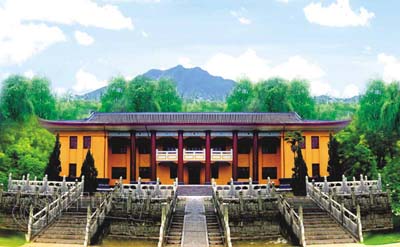Guilin's Ancient Cultural City - Guilin's Historical Humanities
Guilin is a historic and cultural city with a brilliant and splendid history. The beauty of Guilin's landscape is known all over the world, which makes Guilin’s tourism culture another globally recognized brand. After Emperor Qin Shi Huang unified the Lingnan region, Guilin's political, economic, cultural, and military status became increasingly prominent. In Hongwu Year 5 (AD 1372), the Yuan Dynasty's Jingjiang Road was renamed to Guilin Prefecture, and the administrative centers of the three levels of local government - the provincial governor, prefecture, and county - were still located in Guilin. The Qing Dynasty continued the old Ming system, and Guilin remained the political and cultural center of the entire Guangxi province.
Zhu Shouqian, the nephew of Zhu Yuanzhang, was enfeoffed as the Prince of Jingjiang, with his fiefdom in Guilin. In Ming Hongwu Year 5 (AD 1372), the prince's residence was constructed, and in the 26th year (AD 1393), the city walls were built, taking more than two decades to complete. The Jingjiang Prince's Palace City was expanded based on the foundation of the Wanshou Hall of Emperor Yuan Shundi. As early as the Tang Dynasty, there was a Confucian temple at the foot of Duxiu Peak. During the Song Dynasty, an "Iron Bell Temple" (later called Dayuan Temple) was built on the southern side of the mountain. In Yuan Zhishun Year 2 (AD 1331), when Toghon Temür was still the crown prince, he once resided here. Later, after returning to the capital and ascending the throne, he renamed "Dayuan Temple" to "Wanshou Hall" in remembrance of the past. The Jingjiang Prince's Palace was a miniature version of the inner palace in Nanjing. Its main layout included: the Chengyun Gate at the front, the Chengyun Hall in the middle, the sleeping quarters at the back, ancestral temples on the left, and altars for the gods of earth and grain on the right, along with many pavilions and towers. In AD 1393, the second year after the completion of the palace, the construction of the city walls began to protect the palace. The city walls surrounded the palace, stretching 555 meters north-south and 340 meters east-west, with a total circumference of about 1790 meters. Both the inside and outside of the city walls were built with large blue stones, and the city had four gates to the east, west, south, and north. During the Wanli period (AD 1573-1620), the rulers of the Jingjiang Prince's Palace continued to construct numerous pavilions, terraces, halls, and mansions within the palace grounds. A palace garden was built at the foot of Duxiu Peak, filled with rare flowers, exotic grasses, precious birds, and strange animals. There was also a pond below the mountain, with colorful boats and painted barges specifically provided for the entertainment of concubines and palace maidens. The entire complex consisted of more than forty structures, with jade steps, red walls, yellow tiles, vermilion doors, and carved pillars, presenting a magnificent and luxurious sight. The architecture of the Prince's Palace City, on one hand, reflects how the feudal rulers lived extravagant and corrupt lives through cruel exploitation and enslavement of the working people; on the other hand, the design and construction of the entire building demonstrate the high level of wisdom of the working people.
